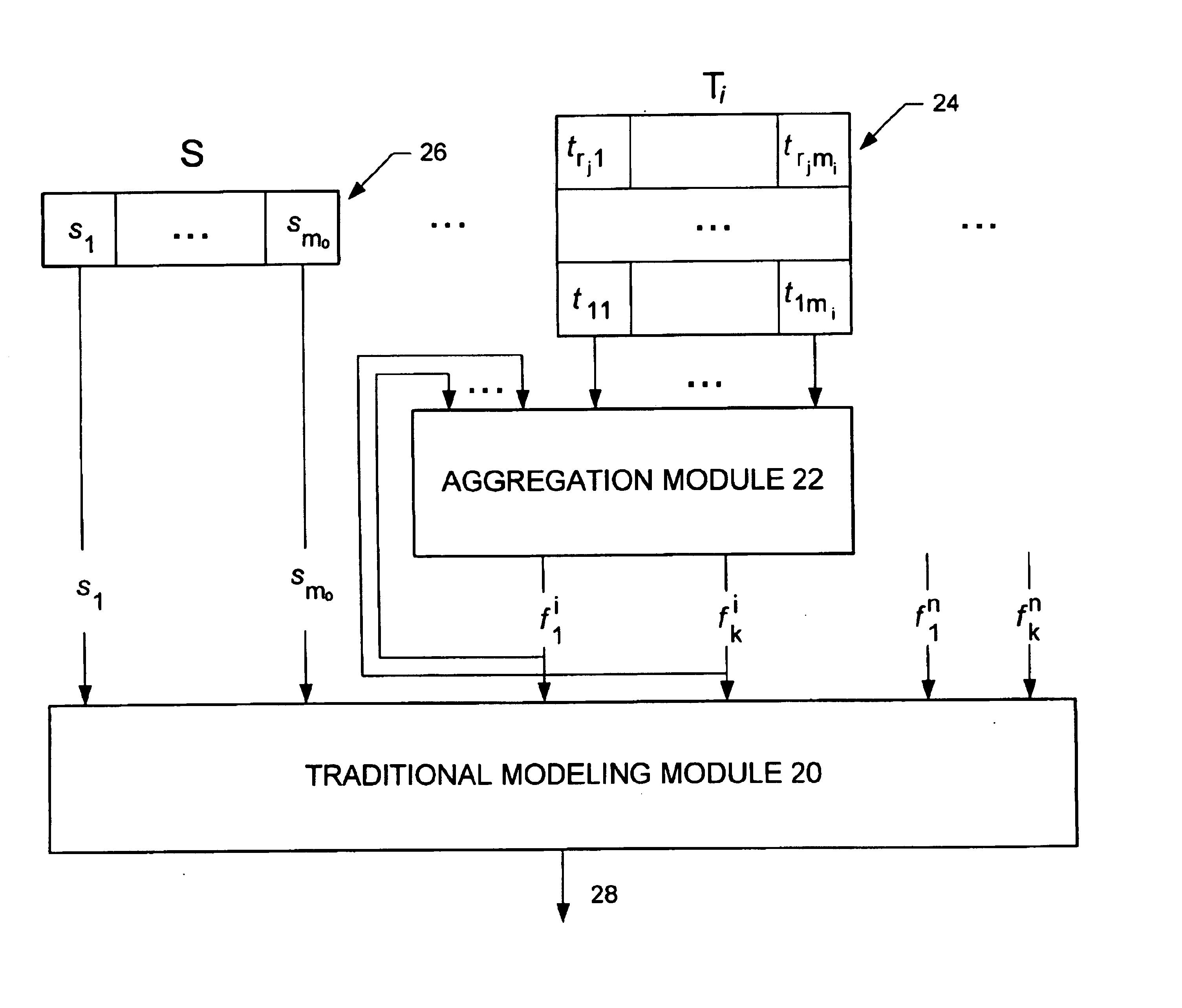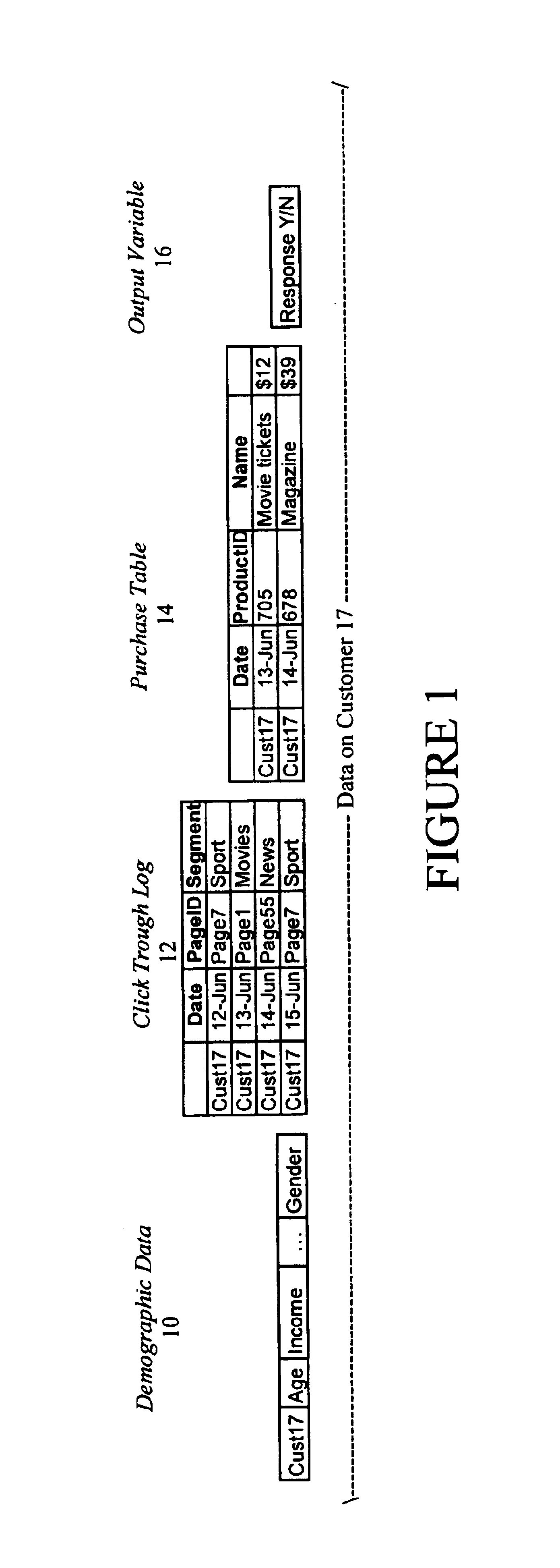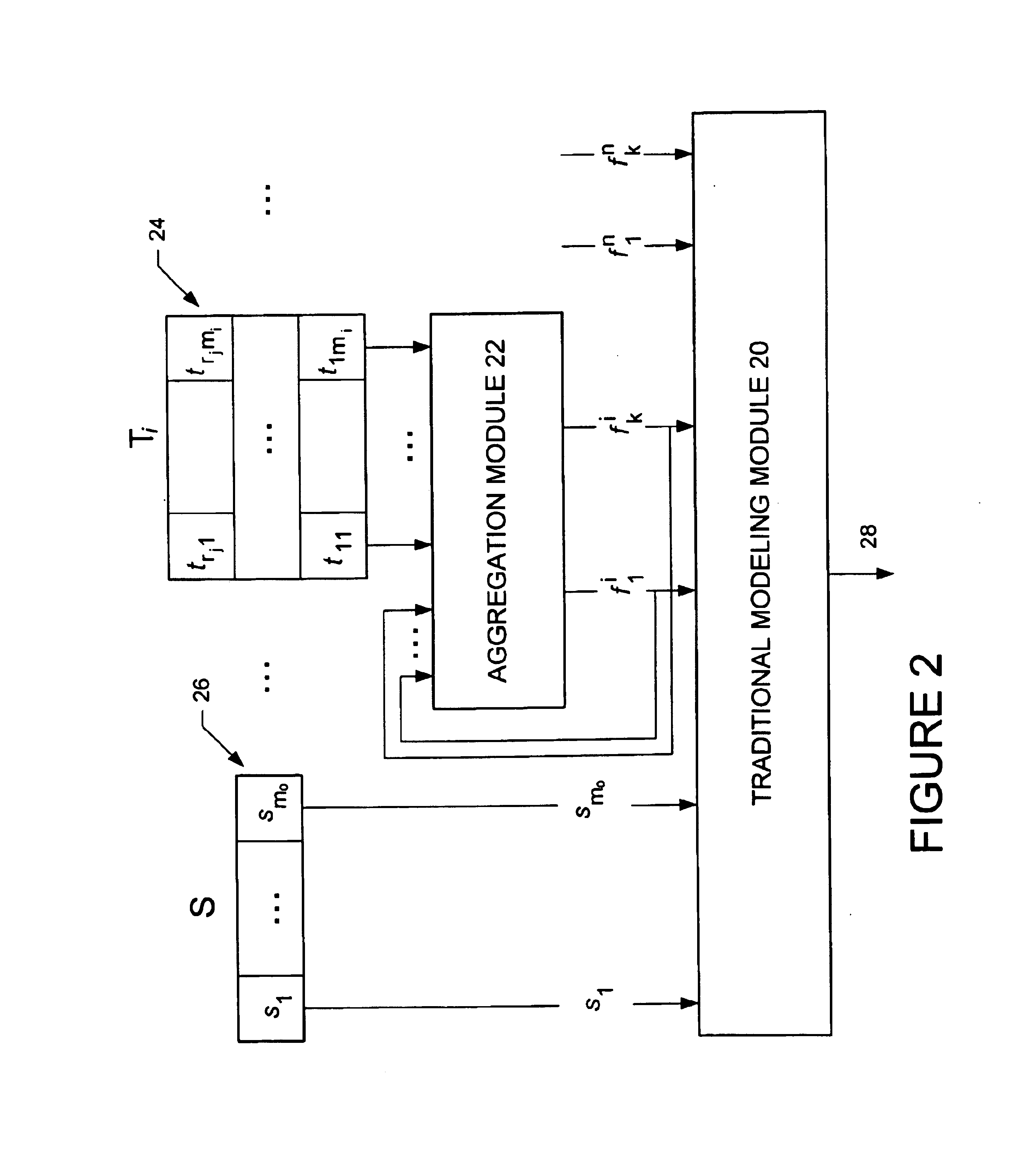Method of building predictive models on transactional data
a technology of transactional data and predictive models, applied in the field of development of predictive statistical models based on transactional data, can solve the problems of no known scientific method that tells a modeler, manual data aggregation, time-consuming and arbitrary process,
- Summary
- Abstract
- Description
- Claims
- Application Information
AI Technical Summary
Benefits of technology
Problems solved by technology
Method used
Image
Examples
Embodiment Construction
The present invention provides a method of developing a model that (i) can accept several transactional sources of data directly, without requiring a manual aggregation step, and (ii) can provide an efficient way to handle updated transactional data.
In practicing the present invention, it is assumed that one desires to build a predictive statistical model for the output variable X. For each observation Xj, one knows a set of input variables{S,T1,T2, . . . , Tn}
whereS=(s1,s2, . . . , sm0)−array of scalar values; Ti=(t11i⋯t1miit21i⋯t2miitrij1i⋯trijmii);i=1, … n -set of n transactional sources of data.
Each transactional source i has mt attributes, and contain rij records for the observations j. It is important that the number of attributes in each transactional source is the same for all observation, but the number of records varies from observation to observation. An example of the input data of the above structure for one observation is shown in FIG. 1.
In this exa...
PUM
 Login to View More
Login to View More Abstract
Description
Claims
Application Information
 Login to View More
Login to View More - R&D
- Intellectual Property
- Life Sciences
- Materials
- Tech Scout
- Unparalleled Data Quality
- Higher Quality Content
- 60% Fewer Hallucinations
Browse by: Latest US Patents, China's latest patents, Technical Efficacy Thesaurus, Application Domain, Technology Topic, Popular Technical Reports.
© 2025 PatSnap. All rights reserved.Legal|Privacy policy|Modern Slavery Act Transparency Statement|Sitemap|About US| Contact US: help@patsnap.com



